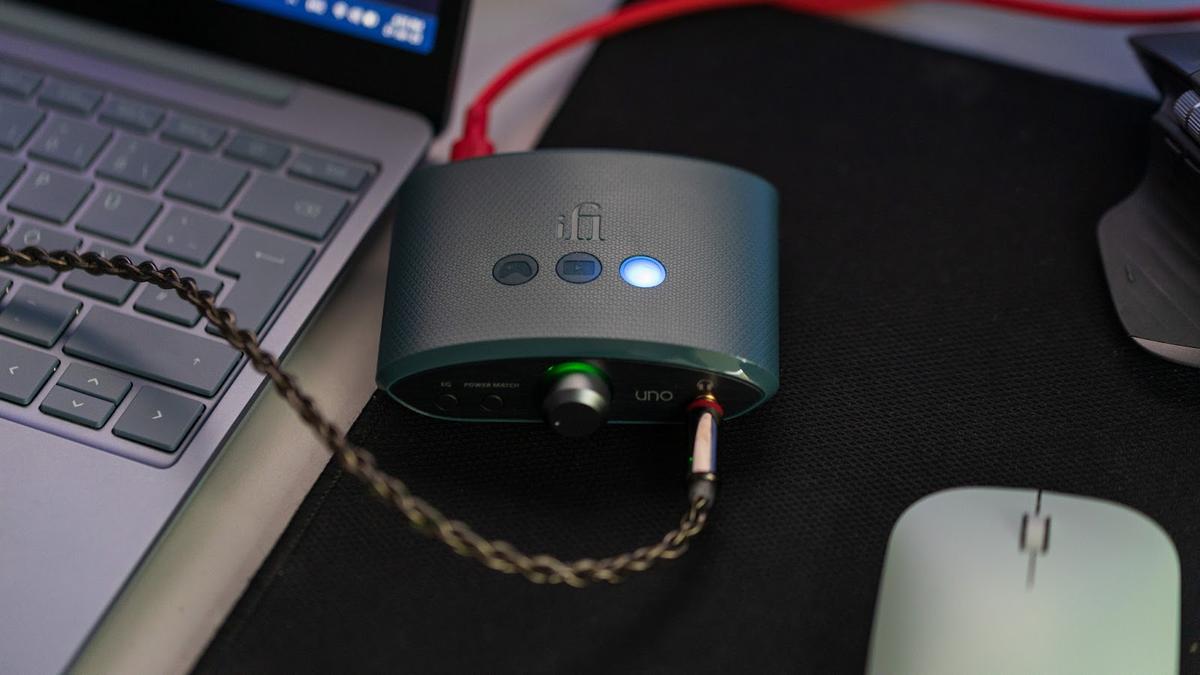iFi Audio’s entry-level DAC/amp does not offer class-leading sound, but a unique feature set makes it an interesting choice.
iFi Audio has become one of the most respected “source gear” manufacturers over the years. The UK-based company mostly offers mid to high-end products, but its budget offerings have garnered widespread acclaim.
The hip-dac2, for example, is one of the best portable DAC/amps in the <USD$200 price bracket. For a while, it was the cheapest DAC/amp in iFi’s lineup, but that changed with the Uno.
- Unique design, good build, and ergonomics
- Analogue volume pot is a joy to use
- Mostly adequate output power, selectable gain levels
- Slightly warm, laid-back signature
- RCA-out allows the Uno to be used with powered monitors
- EQ modes can be handy
- Standby power consumption a bit high (0.8W)
- Not the best option for portability or “stacking” with phones
- Slight hiss can be heard on very sensitive IEMs
- Competitors offer better separation, dynamics, and slightly more output power
iFi Uno has a modest spec sheet, but features like RCA-out and built-in EQ presets make it more compelling. Is the Uno something unique that can stand out in a crowded market, or just a “filler product” that merely bridges the price gap?
Let’s find out.
Technical Specifications
- Form: DAC/Amp
- DAC Chip: 1 X ESS 9219 Sabre
- Frequency Response: 10Hz – 80kHz (-0.5 dB)
- THD+N: 0.02%
- SNR: 113dBA
- Channel Separation: 80dB @ 1kHz, 600 ohms
- Codec Support: PCM – 32bit/384kHz, DSD – 11.2MHz
- Gain Settings: Normal, High (Power Match on)
- EQ Settings: 3 (Game Mode, Movie Mode, Music Mode)
- Outputs: 3.5mm S-balanced, RCA line-out
- Output Power: 211mW @32 ohms, 39mW @300 ohms
- Line-out Level: 2Vrms
- Power Consumption: 0.8W (idle), 1.5W (maximum)
- Controls: Volume knob, power, gain, EQ
- Connector: USB type-C (detachable cable)
- Body material: Silicone, plastic, metal
- Dimensions: 8.9 x 7.1 x 2.5 cm
- Weight: 91g
Packaging
The iFi Uno adopts a no-frills packaging with only the bare necessities included.
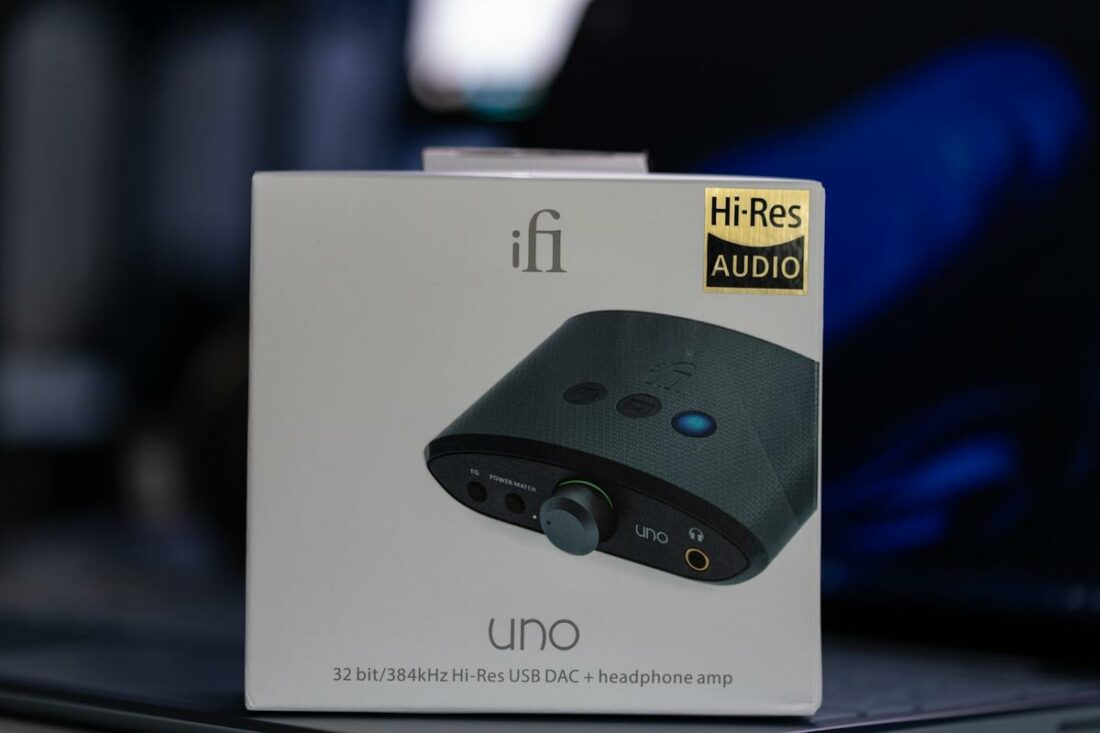
In the box
- iFi Uno DAC/Amp
- USB type-C to type-A cable
Design
The Uno follows the “hip-flask” design principle of IFi’s Zen line of products.
The build is a mix of plastic, aluminum, and rubber parts. The front panel is brushed aluminum, while the back panel has a more matte look.
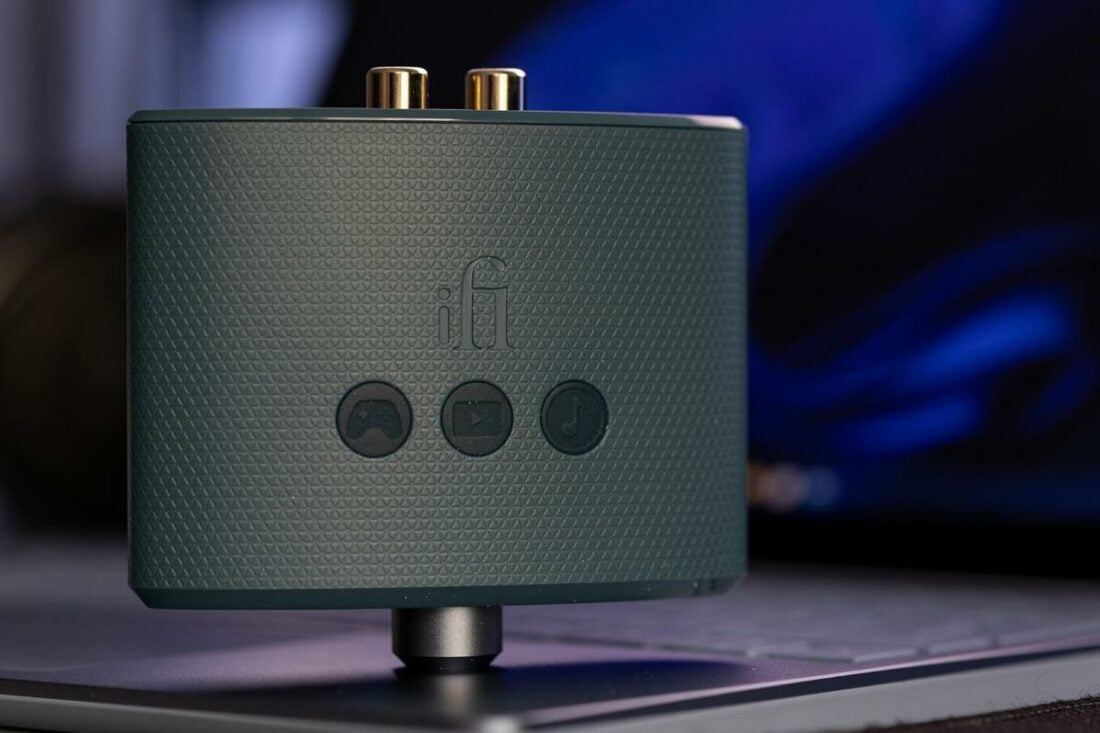
The main chassis is made of plastic, or “mineral-filled polymer,” as per iFi’s marketing. On top are three LED indicators placed underneath rubber grommets, each indicating an EQ mode.
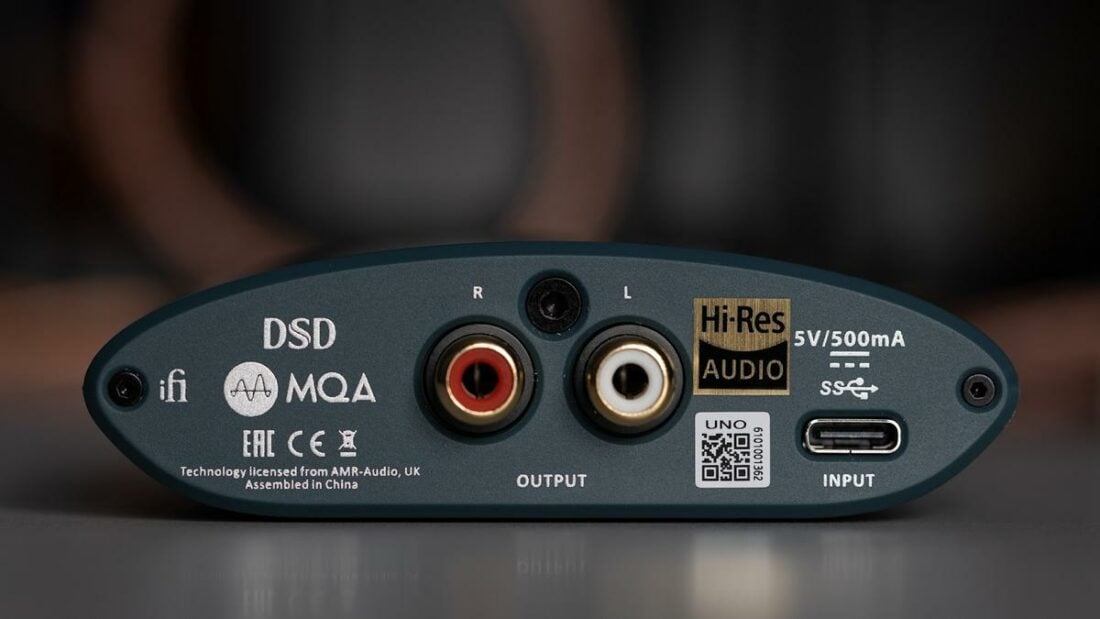
The back panel hosts the type-C port for power and data alongside the RCA line-outs. This is a “variable” line-out, so you must control the output level via the volume pot.
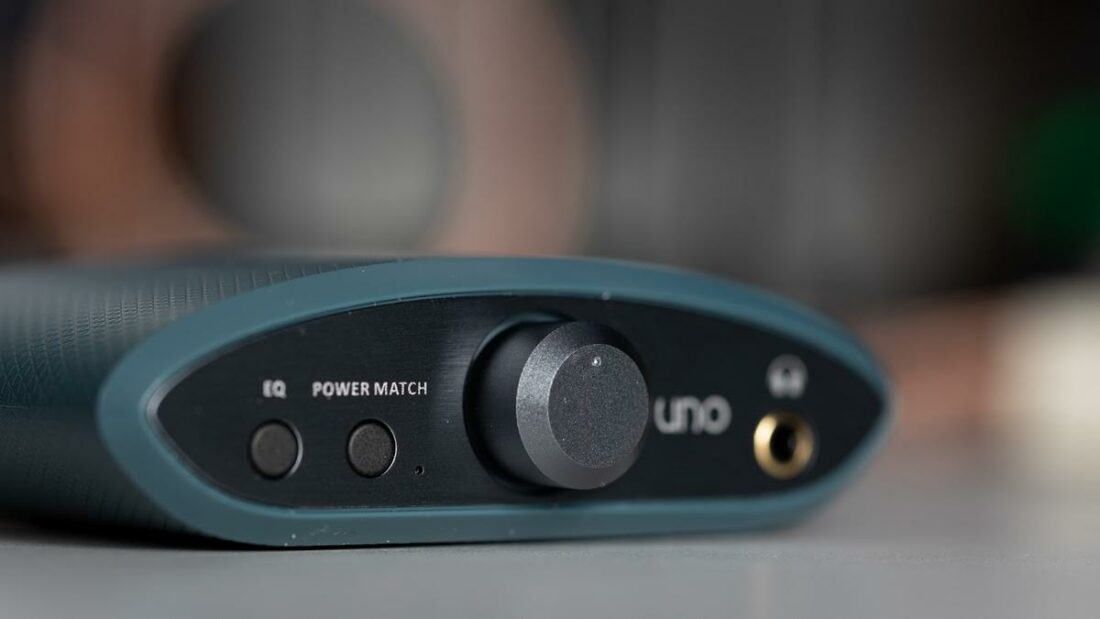
The front has the volume pot as the centerpiece, flanked by the EQ and Power Match (high gain) buttons, and the 3.5mm headphone out. The unit is powered on by turning the volume knob clockwise from its resting position.
The volume pot is very satisfying to operate and has the right amount of friction.
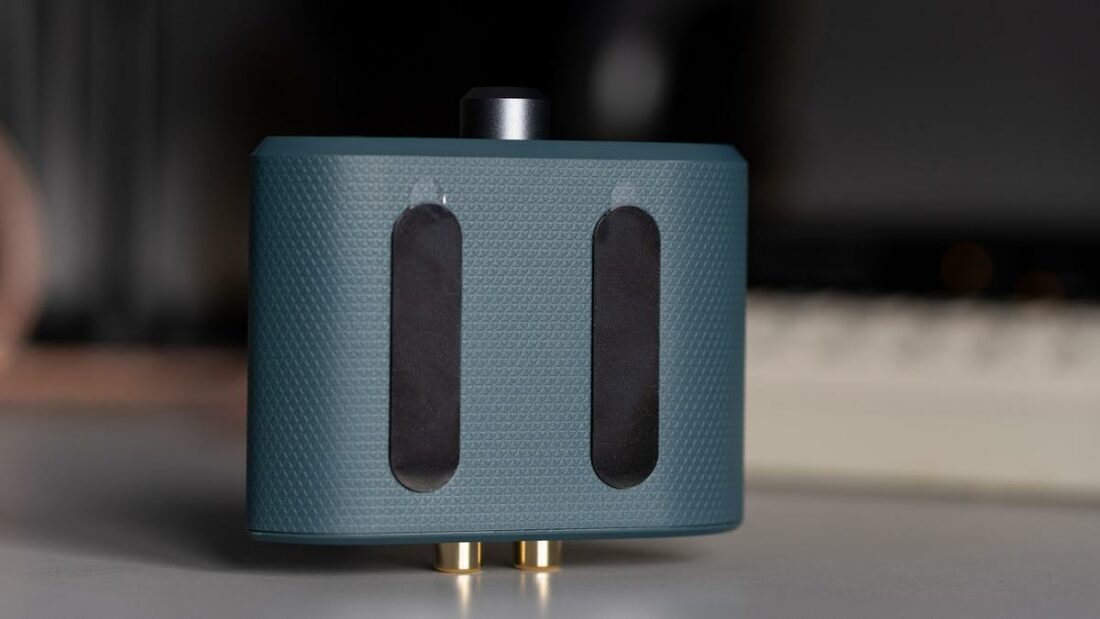
Finally, the bottom of the device has two rubber feet to keep the unit from sliding away on a desk. Overall, the build is very good, and the design is rather appealing.
Handling
One of the key features of the Uno is its portability. At 91g, the device is fairly light and can be easily grabbed in one hand.
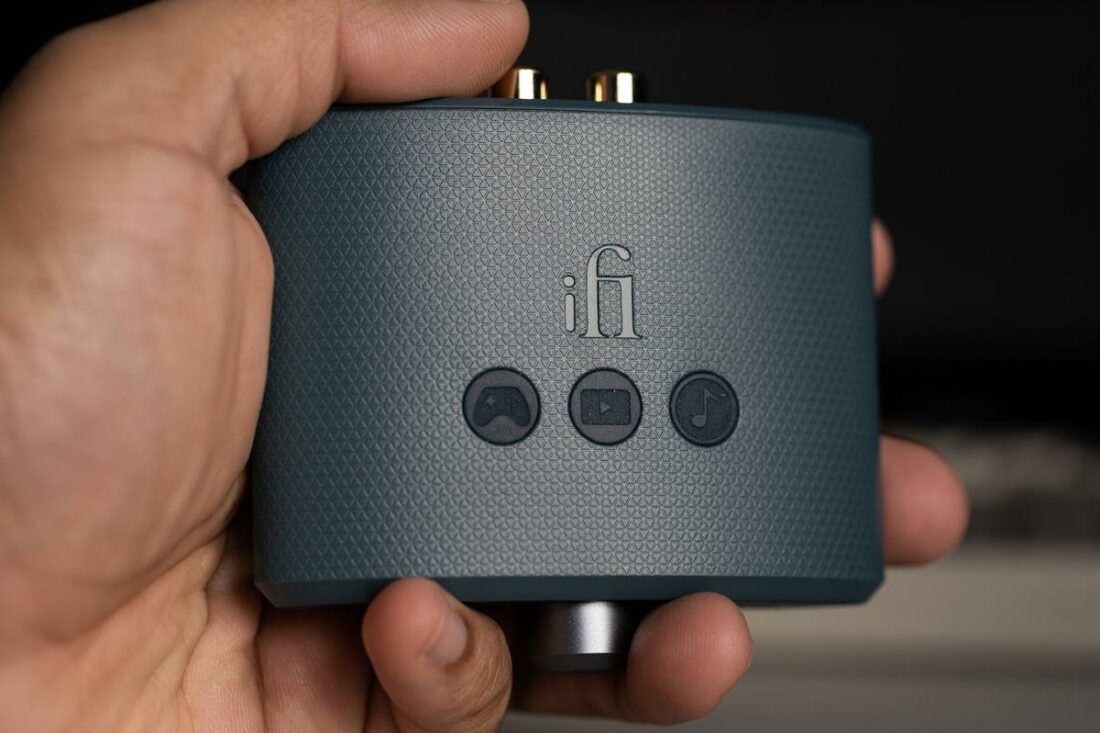
That being said, the Uno is still best placed on a desk rather than in your pocket. The overall thickness, button layout, and protruding volume pot is difficult to operate on the go.
Power Consumption
Standby power draw is quite high at 0.8W. This can climb as high up as 1.5W at max volume. Still within the limits of portable operation, but battery drain is severe if connected to portable devices with low battery capacity.
I recommend using the Uno with laptops or tablets to manage power draw.
Internals
iFi has traditionally selected the BurrBrown PCM series of DAC chips, but Uno departs from that trend with the Sabre ES9219 chipset in the Uno. This popular chip is known for its low power consumption and distortion figures.
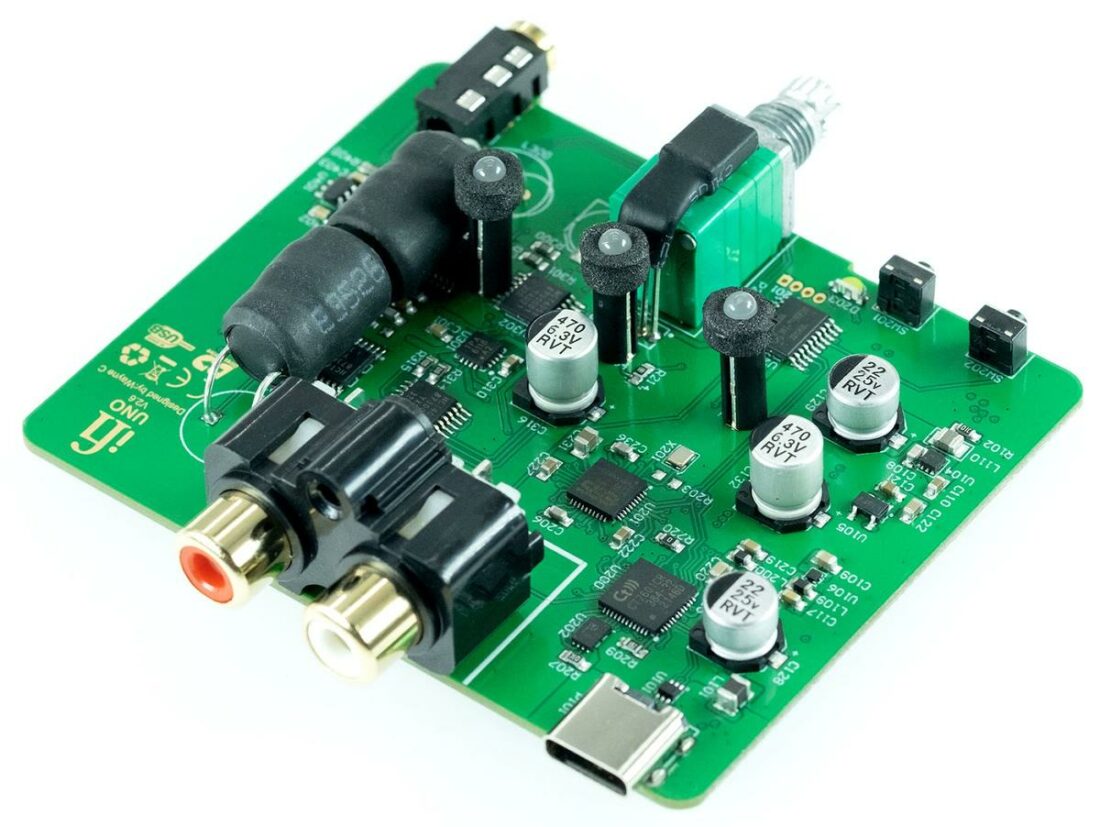
iFi keeps the PCB layout simple while opting for quality components. TDK ceramic caps and Murata caps are used throughout, alongside a fully-analog potentiometer that avoids bit truncation.
iFi Uno Sound
The iFi Uno has a mostly neutral tuning with laid-back highs.
It does not sound analytical or harsh, which is often associated with Sabre DAC chips. In fact, iFi managed to make it sound somewhat laid back in nature. Treble is not as “sharpened” as other dongles utilizing this chipset.
Dynamics is an area that exposes the budget nature of the Uno. Macrodynamic punch is good, but microdynamics (subtle shifts in volume) are not as obvious as they are on some higher-end sources. Some of the competition edges out the Uno on this front.
The output power is another area where the Uno slightly lags behind the competitors. At 211mW into 32 ohms, there is enough power to drive most IEMs and efficient headphones, but planars will demand more.
The HiFiMAN HE-400se, for example, sound intimate and congested – an indication that they are being underdriven.
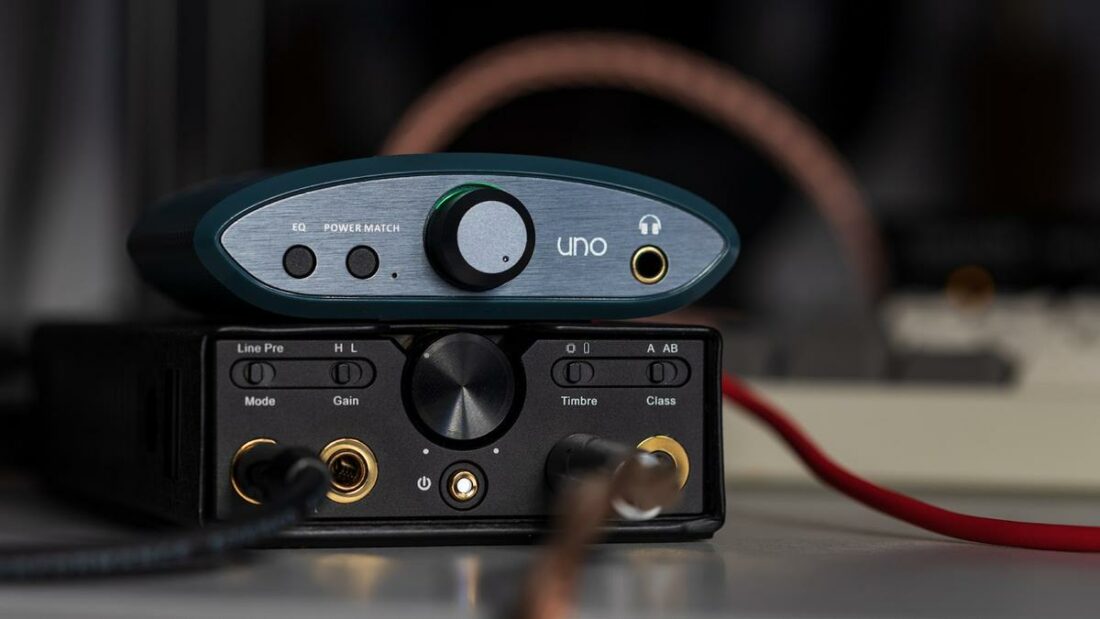
The voltage swing (2Vrms) is not high enough to drive high-impedance dynamic driver headphones, but most IEMs will be driven well. I really like the pairing with the Dunu Talos, especially with the music mode EQ on.
The Uno is limited to pairing with IEMs for the most part, with the occasional easy-to-drive pair of headphones.
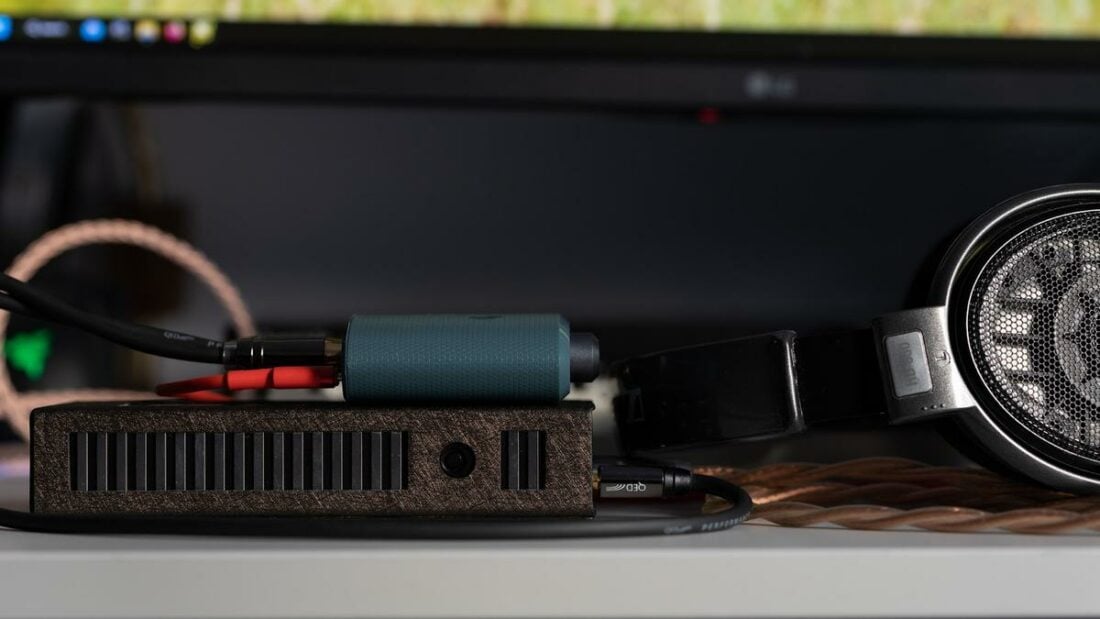
One area where the Uno falls short, much like its peers: powering low impedance, low sensitivity IEMs. One such example is the Final E5000. Having just 14 ohms impedance and 92 dB/mW sensitivity (both of which get lower with frequency), most portable devices fail to power them properly.
The Uno is no exception. They can barely get the E5000 loud before distortion sets in.
Moreover, very sensitive IEMs like Campfire Audio Holocene will exhibit slight hiss when paired with the Uno. It’s nothing too distracting but some competing dongles perform better in this regard.
EQ modes
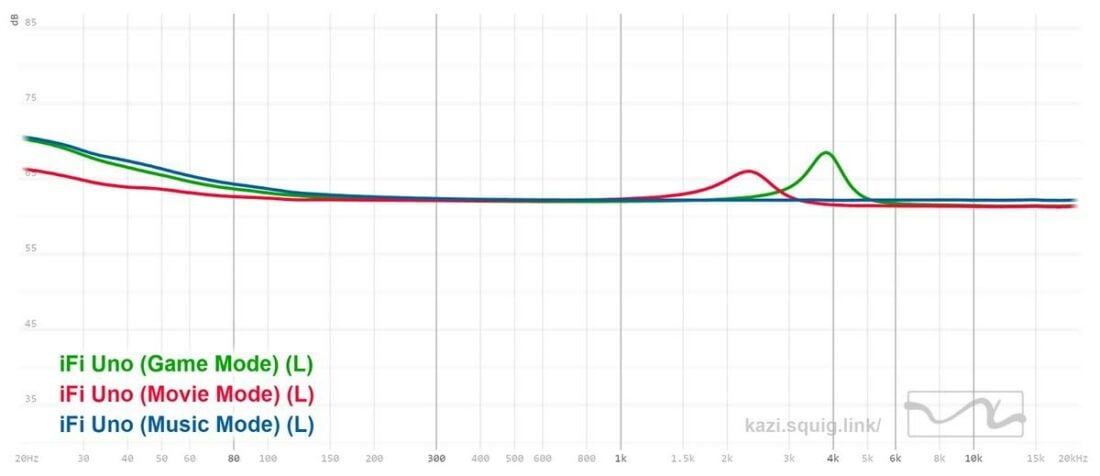
The party trick up Uno’s sleeves is the built-in EQ modes, which are applied as “digital filters” (so no analog EQ here like the aforementioned hip-dac2).
As the graph shows, the Game mode boosts the sub-bass by +8dB max from 150Hz downwards. The 4kHz region also gets a +6dB boost. This results in a more up-front voice and an enhanced sense of rumble. But I find this mode to be too extreme for my tastes.
The Movie mode has a more subtle sub-bass boost of about +4dB at the end, while the 2.5kHz region gets a similar boost to enhance dialogue clarity. Useful while watching movies but not so much elsewhere.
Finally, the Music mode only boosts the sub-bass from 150Hz downwards by +8dB at the extreme end, adding rumble and slam to the bass without bleeding into the mids. I find this setting enjoyable with planar IEMs like Dunu Talos or bass-light IEMs like the HarmonicDyne Devil.
Comparisons
iFi hip-dac2
The iFi hip-dac2 is priced higher, has a built-in battery pack (so no reliance on external power), and sports a 4.4mm balanced out with higher output power and voltage swing.
It lacks the Uno’s RCA-out feature, so as a standalone desk DAC/amp, or if you plan to stack with a more powerful desktop amp, the Uno is more suitable.
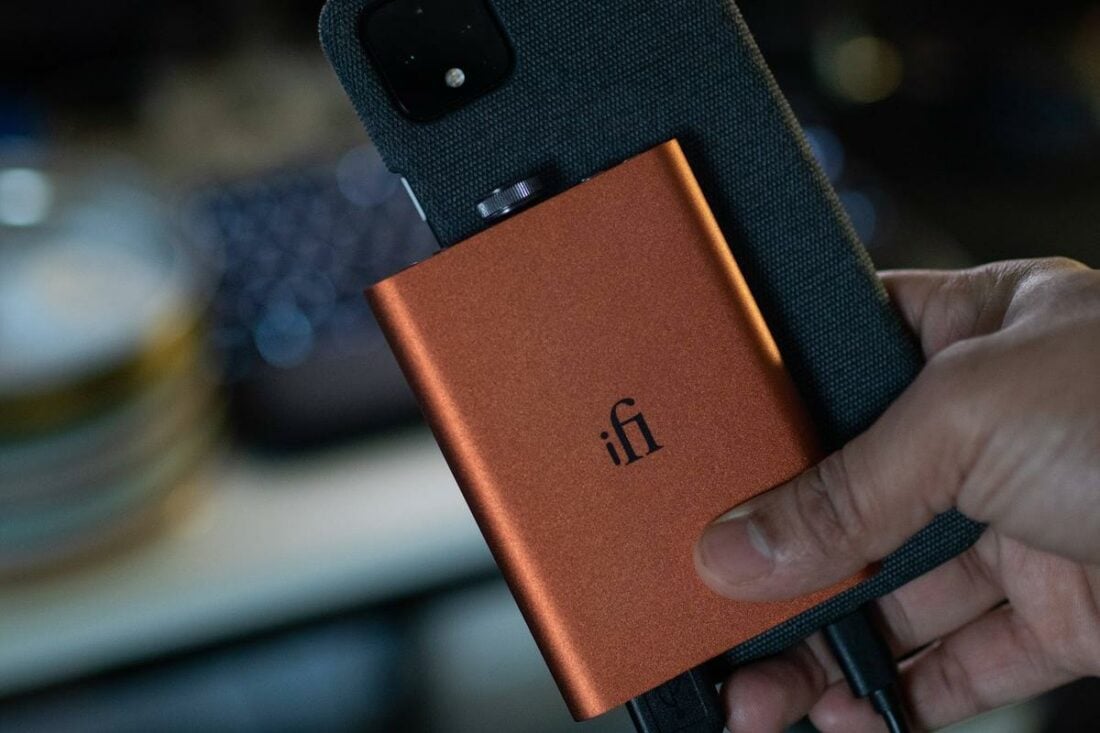
I prefer the tasteful coloration of the hip-dac2 over the more neutral sound that Uno exhibits.
For me, the price premium is worth it if you do not plan to use an extra amp, but your mileage may vary.
Moondrop Dawn
The Moondrop Dawn is much smaller than the Uno in size but does not have the excellent volume pot, EQ modes, or RCA-out.
It does compensate for that with higher output power via the balanced out, a mobile app, and lower power consumption.
I also find the Dawn to have better dynamics and overall sense of detail than the Uno. As a dongle, it is better for use with mobile devices, but for pairing with other amps (e.g. the MT-601s tube amp) the Uno is more suited.
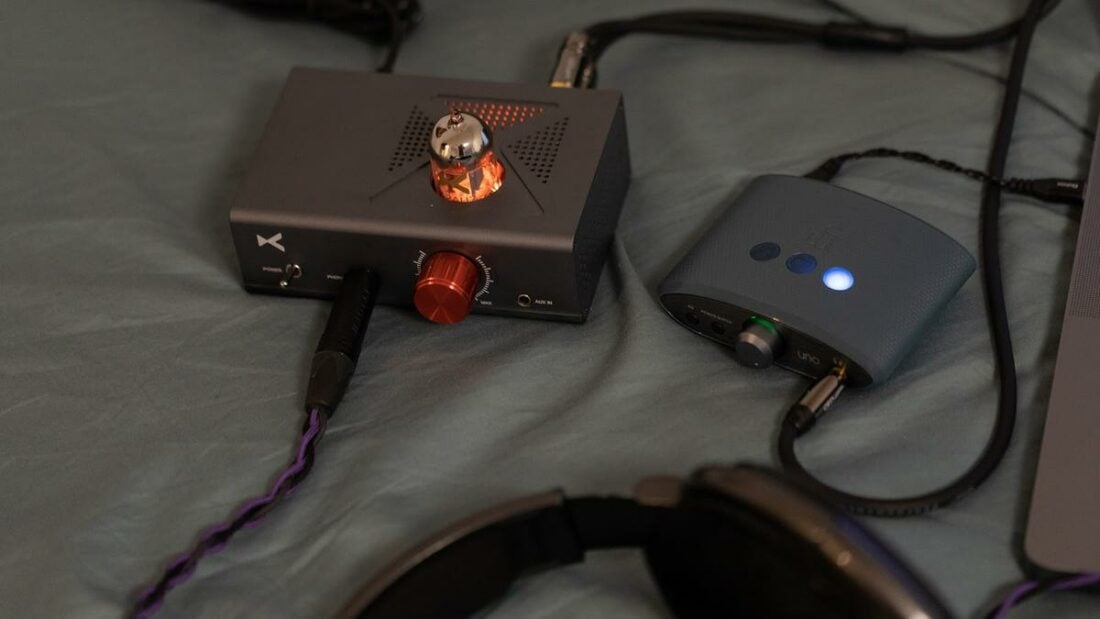
Where to Buy
Conclusion
The iFi Uno offers a unique combination of features that are unavailable elsewhere. No other mainstream product I have encountered offers a volume pot, built-in EQ presets, and RCA outputs in a package under USD$100.
This alone would be enough to propel the Uno above the rest a few years back, but these are different times. Competitors offer better output power, lower power draw, and a more resolved and dynamic sound.
Its shape, RCA outputs, power draw, and front volume control indicate that the Uno is intended for desktop use, but low output power hampers it from driving anything more than IEMs or very efficient headphones.
If you need a small, budget DAC/amp that can be easily stacked with desktop amps, then the Uno is a viable option. It is essentially a cut-down, miniaturized version of the Zen DAC V2 and should cater well if desk space is at a premium.
For strictly portable use, it will work, but you can do better.
